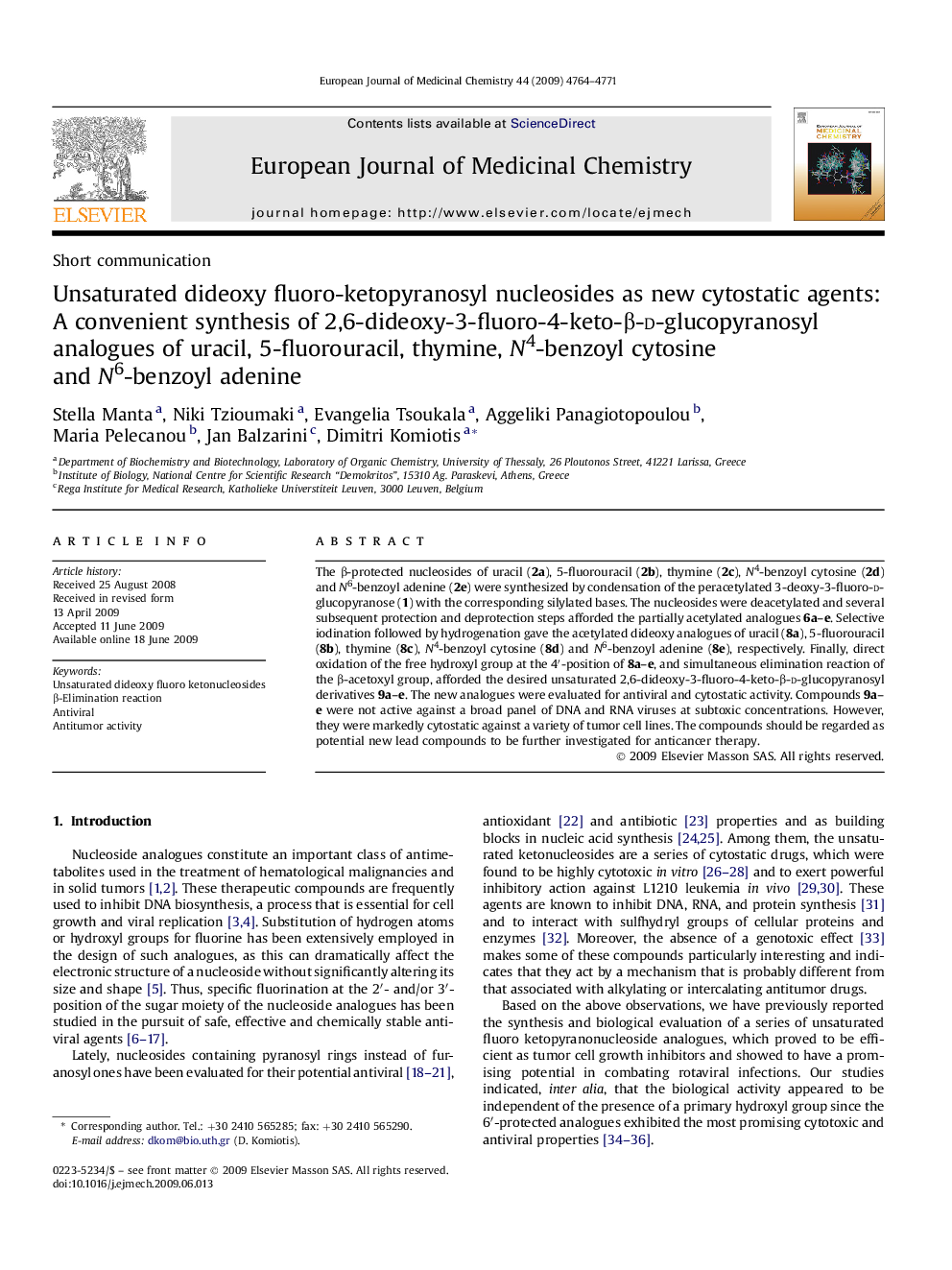| Article ID | Journal | Published Year | Pages | File Type |
|---|---|---|---|---|
| 1393286 | European Journal of Medicinal Chemistry | 2009 | 8 Pages |
The β-protected nucleosides of uracil (2a), 5-fluorouracil (2b), thymine (2c), N4-benzoyl cytosine (2d) and N6-benzoyl adenine (2e) were synthesized by condensation of the peracetylated 3-deoxy-3-fluoro-d-glucopyranose (1) with the corresponding silylated bases. The nucleosides were deacetylated and several subsequent protection and deprotection steps afforded the partially acetylated analogues 6a–e. Selective iodination followed by hydrogenation gave the acetylated dideoxy analogues of uracil (8a), 5-fluorouracil (8b), thymine (8c), N4-benzoyl cytosine (8d) and N6-benzoyl adenine (8e), respectively. Finally, direct oxidation of the free hydroxyl group at the 4′-position of 8a–e, and simultaneous elimination reaction of the β-acetoxyl group, afforded the desired unsaturated 2,6-dideoxy-3-fluoro-4-keto-β-d-glucopyranosyl derivatives 9a–e. The new analogues were evaluated for antiviral and cytostatic activity. Compounds 9a–e were not active against a broad panel of DNA and RNA viruses at subtoxic concentrations. However, they were markedly cytostatic against a variety of tumor cell lines. The compounds should be regarded as potential new lead compounds to be further investigated for anticancer therapy.
Graphical abstractA synthesis of novel unsaturated dideoxy fluoro-ketopyranosyl nucleosides of uracil (9a), 5-fluorouracil (9b), thymine (9c), N4-benzoyl cytosine (9d) and N6-benzoyl adenine (9e), respectively, is reported. Compounds 9a–e were found to inhibit cell proliferation (IC50: 0.49–16 μM), while compounds 9d and 9e remarkably inhibited radiolabeled thymidine, uridine and leucine incorporation into methanol-insoluble cell material to a similar extent (EC50: 7.9–14 μM).Figure optionsDownload full-size imageDownload as PowerPoint slide
